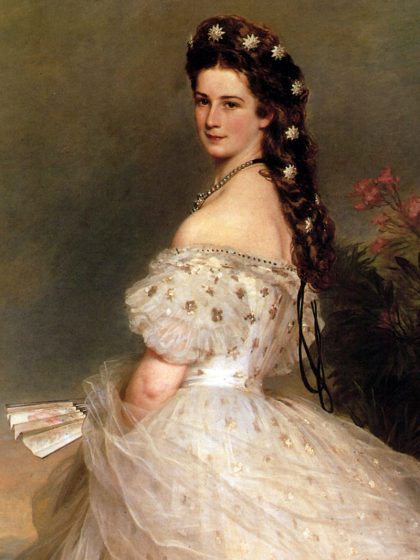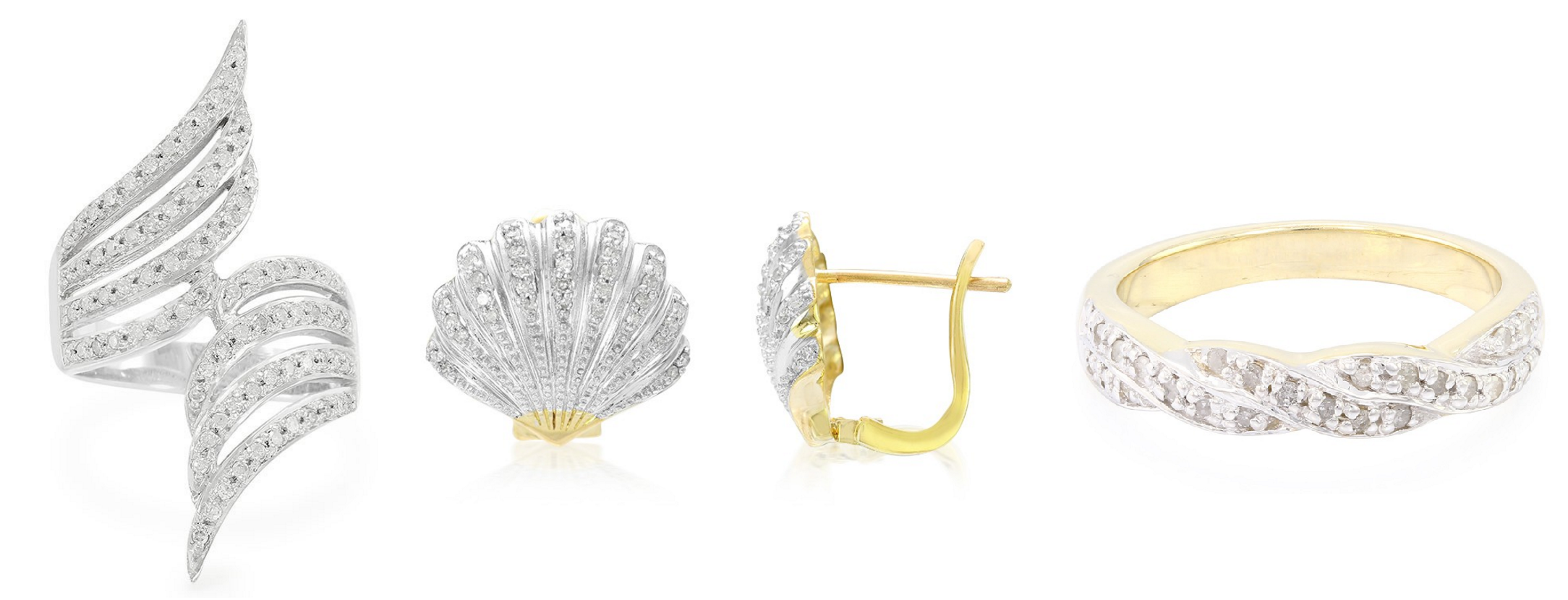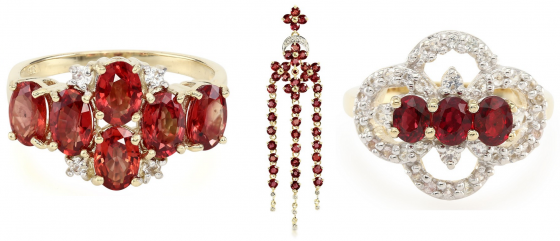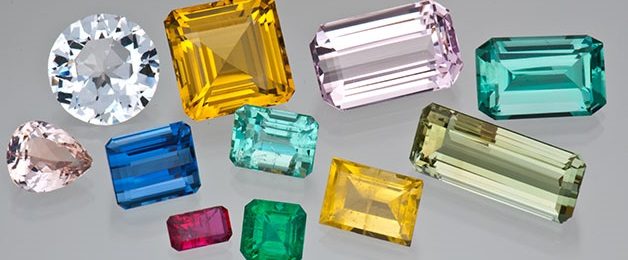The most famous portrait of the Empress Sissi shows us with her spectacular hair that falls to the waist decorated with wonderful Stars of Diamonds and Pearls.

Portrait of Empress Sissi with the famous Diamond Stars
Empress Sissi
One of the strongest symbols of femininity to come out of the 19th century is the image of Elizabeth of Bavaria, Empress of Austria, known as Sissi. It was not, of course, the trilogy of romantic films created about her life in the 50’s, directed by Austrian Ernst Marischka and starring a very young Romy Schneider. In fact Sissi, who was much admired for her beauty, suffered from the very first day of her time in Vienna. She hated the strict and incongruous protocol of the court and was the victim of a deep depression. It is known today that she was obsessed with her figure and diet, a disease we know today as anorexia. She had habits very advanced for her time such as performing intense physical exercise every day, something unthinkable for a woman in the 1800’s, and her habit of smoking cigarettes. She even had an anchor tattoo on her arm! This was for her love of the sea and her identification with the sailors for feeling like a foreigner without a homeland. Despite her rejection of the court, one thing she loved was majestic jewels.
Portrait of Stars
Sissi’s legacy is her beauty, personality as a rebel fighter for the Hungarian cause and her wonderful portraits. The best known portrait of Sissi features the famous Diamond Stars in her hair. The portrait was painted by a German, Franz Xaver Winterhalter, in 1865. Sissi’s Diamond Stars are many and diverse! Contrary to popular belief, the stars in the painting all differ. Some stars have eight points, some ten, some with Pearls and others without – created by different jewellers.
The ten-pointed stars without Pearls were created by jewellers Rozet and Fischmeier, who were jewellery suppliers of the court. A set of this jewellery still remains and was exhibited in Vienna in the “Museum of Sissi” for some years as a loan as it is in a private collection. It featured a large ten-pointed Diamond Star and two smaller matching Diamond Stars.
Köchert jewellery, also a supplier of cut jewellery, is responsible for the large Diamond Stars with Pearls in the centre. The set of Stars in Sissi’s hair painted in the portrait by Winterhalter consists of twenty-seven Diamond Stars with ten pearls in the centre, that could be used individually as brooches or linked together creating a diadem. These are Köchert jewellery creations. Contrary to what has been written in the past, the Empress did not give any of these Diamond Stars to her ladies in company, but she bequeathed them to her granddaughter, the Archduchess Elizabeth.

Diamond Jewellery from Rocks & Co.
Schönbrunn Exibition
The Diadem was exhibited in the Schönbrunn Palace of Vienna in 1998 in an Exhibition commemorating 100 years since the Empress’s death. During this display, the unthinkable happened. Although the jewel was placed behind a shielded glass a thief managed to exchange one of the stars with an imitation. A security officer only accidentally noticed the trick. Just a year later, thanks to investigations surrounding a robbery committed in a Canadian bank, the police found the real Star of Sissi. The Police discovered the whereabouts of the Star of Sissi to be in the house of the grandmother of one of the robbery suspects, in Winnipeg (in the Canadian province of Manitoba). Ten years later in 2008, the Canadian government was finally able to return the jewel to its owner, after the conclusion of the trial against the 35-year-old thief. The Star was acquired by the Cultural Association of the Schönbrunnen Castle in 2010 and from then on it is exhibited at the Sissi Museum.

Ruby Jewellery from Rocks & Co.
Sissi’s Opulent Collection
Other opulent jewels belonging to the Empress include a set of Diamonds and Rubies composed into a diadem, a choker and a pectoral brooch, whose gemstones belonged to none other than Queen Marie-Antoinette of France and her daughter Marie-Therese, Duchess Of Angouleme. When Marie-Antoinette died in exile, the jewels were passed on to her relatives Habsburg-Lorraine and they consequently formed part of the royal jewels of the Empress Sissi. This set was immortalised in a famous portrait painted by Georg Raab in 1875.






